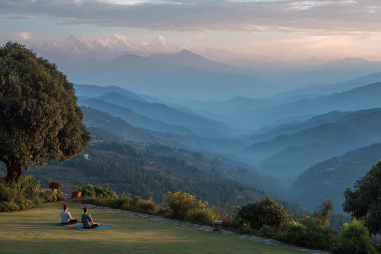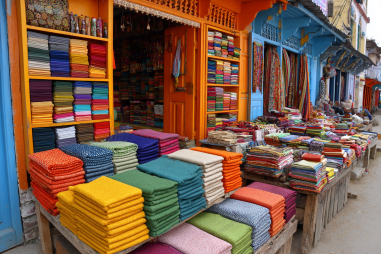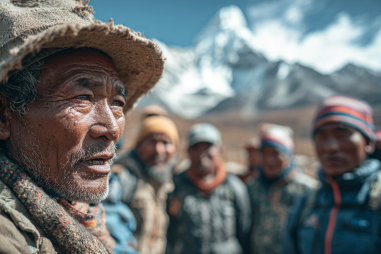Embarking on the Everest Base Camp trek is an exhilarating adventure that demands careful preparation, especially when it comes to packing. The trail covers diverse terrains and altitudes, exposing trekkers to fluctuating weather conditions ranging from warm days to bitterly cold nights. Packing the right gear ensures not only your comfort but also your safety throughout this challenging journey. Below is a detailed and essential packing list designed to help you navigate the demands of the Everest Base Camp trek with confidence and ease.
Clothing Essentials for Varying Weather
The weather on the trek can shift dramatically with altitude and time of day, so layering your clothing is the best approach. Start with moisture-wicking base layers made of merino wool or synthetic materials that keep you dry by drawing sweat away from your skin. Avoid cotton as it retains moisture and chills the body. Over these, add insulating layers such as fleece or lightweight down jackets to trap heat.
For the outer layer, a waterproof and windproof shell jacket and pants are vital to protect you from rain, snow, and high winds. Make sure these pieces are breathable to help regulate your body temperature. Also pack a warm hat, gloves (ideally waterproof and insulated), and a buff or neck gaiter to shield your face from cold winds and dust.
During lower-altitude sections, lightweight trekking pants and shirts with long sleeves will keep you comfortable and protected from the sun. Don’t forget to bring a pair of shorts or lighter clothing for warmer days in lower altitudes or during intense physical activity.
Footwear: Types and Socks
Your feet endure the longest hours of trekking, so investing in suitable footwear is essential. For most of the trek, sturdy, broken-in hiking boots with good ankle support and a durable sole will provide the best protection and stability on rocky and uneven terrain. Waterproof boots are ideal given the occasional wet and snowy conditions.
In addition to your boots, pack a pair of lightweight shoes or sandals to give your feet a break during evenings in the lodges. Comfortable trekking socks can make a huge difference. Merino wool socks are highly recommended as they wick moisture well and help prevent blisters. Carry several pairs and consider bringing thin liner socks to reduce friction further.
Sleeping Gear and Tents (if Camping)
If your trek involves camping rather than staying in teahouses, you’ll need specialized gear to stay warm and comfortable overnight. A high-quality, four-season sleeping bag rated to at least -10°C (14°F) is crucial, as temperatures at base camp and higher altitudes can plummet sharply at night. Using a sleeping bag liner adds extra warmth and helps keep your bag clean.
A lightweight, durable tent designed for high-altitude environments provides shelter from wind, cold, and potential precipitation. Don’t forget a sleeping pad or foam mattress to insulate you from the cold ground, ensuring restful sleep and preventing heat loss. Many guided treks arrange tents and communal dining tents, so confirm what your package includes.
Trekking Equipment: Poles, Backpacks, Hydration
Trekking poles are invaluable on the Everest Base Camp trail as they reduce strain on your knees during steep descents and provide extra stability on uneven ground. Adjustable, lightweight poles with comfortable grips are a popular choice among trekkers.
Your backpack should ideally be between 40 and 60 liters, lightweight but spacious enough to carry your essentials without overpacking. A daypack of 20–30 liters is handy for carrying water, snacks, and extra layers during daily hikes.
Hydration is crucial at high altitude to prevent dehydration and altitude sickness. Bring a hydration bladder or several reusable water bottles. While water is available at many stops, always treat or filter it before drinking to avoid waterborne illnesses. Carry water purification tablets or a portable filtration system for safe drinking water.
Health and Safety: First Aid and Medications
Maintaining good health during the trek requires carrying a well-stocked first aid kit that addresses common issues such as blisters, headaches, altitude sickness, and minor injuries. Include blister plasters, adhesive bandages, antiseptic wipes, pain relievers, anti-inflammatory medication, and any personal prescription medications.
Altitude sickness is a serious concern on the EBC trek, so bring medications like acetazolamide (Diamox) if recommended by your doctor. Consult with a healthcare professional well before your trip to plan your medication needs.
Other useful items include sunscreen with high SPF, lip balm with UV protection, insect repellent, and hand sanitizer. Carrying a thermometer can help monitor for fever, signaling potential illness.
Technology: Cameras, GPS, Communication
Capturing the breathtaking scenery is one of the highlights of the trek, so bring a good-quality camera or smartphone with ample storage and batteries. Cold conditions can quickly drain batteries, so carry portable power banks and keep batteries warm in inner pockets.
A GPS device or trekking watch with GPS capabilities can be useful for navigation, though the trail is generally well-marked. Download offline maps or trek apps beforehand.
Communication devices such as a satellite phone or walkie-talkie may be necessary if you’re trekking independently or in remote areas. For most guided treks, mobile service is available in villages along the route; however, signal strength can vary with altitude and weather conditions.
Food and Snacks Recommendations
While the lodges and teahouses along the trail offer meals, bringing your own high-energy snacks ensures you have quick access to nourishment whenever needed. Pack lightweight, nutrient-dense foods such as nuts, dried fruits, energy bars, chocolates, and instant oatmeal.
Electrolyte powders can be added to your water to replenish salts lost through perspiration and help maintain fluid balance. Keep in mind that carrying excessive food will add weight, so choose snacks that are compact, calorie-rich, and easy to carry.
Final Tips on Packing Light and Smart
One of the biggest challenges on the Everest Base Camp trek is balancing having enough gear without overburdening yourself. Aim to pack light by selecting multi-functional items and focusing on the essentials. Test all your gear before departing to avoid bringing unnecessary items.
Use compression bags or packing cubes to organize and minimize space in your backpack. Remember that many trekking companies offer porter services, allowing you to carry only a daypack, but check the weight limits and handle valuables yourself.
Keeping your pack weatherproof with a rain cover or dry bags protects both you and your gear from the elements. Lastly, don’t forget essential documents such as your trekking permits, passport, travel insurance, and emergency contacts.
Getting Your Gear Ready for Success
Preparing thoughtfully for the Everest Base Camp trek by packing the right gear is a key step toward an enjoyable and safe adventure. Understanding the demands of high-altitude trekking helps you select clothing, equipment, and supplies tailored to the challenges you’ll face. With the right essentials—from layered clothing and sturdy boots to health supplies and technology—you’ll be ready to immerse yourself in the incredible experience of trekking to one of the world’s most iconic destinations.







